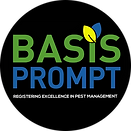Seagull Control Lancashire - How to prevent and control Seagulls at my business - Bird Control.
- Atlas Environmental Services

- Nov 5, 2022
- 5 min read
Controlling Seagulls
Gulls, or as they are more commonly referred to as: ‘seagulls’, were historically a traditional symbol of the British seaside. Due to rapid increases in urban populations seen in recent decades however, they are now often considered a nuisance and seagull pest control is on the rise around the country.
Driven inland in search of food, gulls can cause a wide range of disturbances to both homes and businesses including:
Sound disturbance: Noise from gulls can be deafening, particularly around nesting season (March – September). Some research has even captured seagull calls at equivalent to alarm clock bells and passing freight trains!
Physical attack: As gulls have become urbanised, they have, by definition, become bolder in their behaviour. Many will now approach humans, seeking food with no fear. This behaviour change, partnered with increased demands for food during nesting season, has led gull attacks on both human and animals (typically; other birds, pet cats and dogs) to become much more prevalent.
Excrement: White in colour, seagull waste can not only be unsightly but can be dangerous to health. Rooftop ventilation systems are at particular risk, these areas should be checked regularly for bird activity and where appropriate preventative bird control measures put in place (e.g. seagull spikes)
Damage to buildings and property: like most birds considered pests to urban environments, seagull excrement is acidic. Build-up of gull waste can cause extensive damage, even eroding concrete!
Damage to exterior building systems: Debris and waste from rooftop nesting seagulls can block guttering and drainage systems. In addition, waste caused by nesting also attracts many insects and parasites.
Financial: Ongoing building maintenance and cleaning resulting from gull activity can lead to significant costs in the long run.
Here we will give you an introduction to; seagull biology and nesting behaviours, legislation and how it impacts seagull problem control, seagull prevention and what to do if you encounter a problem with seagulls in your home or workplace.
A Brief Background to Seagulls
Measuring around 68cm from beak to tail and with recorded wingspans of up to 85cm, seagulls are considered large birds. Many species make up the Gull family, although it is three key species that commonly cause problems in urban areas, these are: Herring Gull, Lesser Black-backed Gull and Greater Black-backed Gull.
Urban seagulls have learnt to scavenge food resources from easily accessible human refuse such as household bins and public litter bins. Moreover, businesses and events serving food are also a target of urban gulls.
Breeding occurs between March and April with nest building commencing in early May. Once a gull pair has successfully nested, they will return to the nest annually. It is for this reason persistent gull problems can be encountered if not properly managed.
Seagulls are also very social animals, established nests can attract other mating pairs to the area who may take residence on surrounding buildings.
Seagulls typically lay around three eggs per clutch with young hatching in June.
Hatchlings are fast growing and highly active, occasionally resulting in young falling from the nest (see our section ‘What to do if you have seagulls’ for more info).
Young birds (fledglings) leave the nest in August and reach sexual maturity around three to four years later.
Gulls have been recorded to live up to twenty years – therefore preventative control measures are the most effective solution to potential long-term seagull problems.
Seagulls and the Law
In the UK, all three species of seagull are protected under the Wildlife and Countryside Act 1981. This legislation makes it illegal to injure or kill any gull. It also prohibits damaging or destroying an active nest or its contents.
These restrictions highlight the importance of ensuring any persons charged with seagull problem control on your property is competent to do so properly, and that any seagull activity is successfully managed at an early stage (before laying, typically March) to ensure long-term effectiveness.
Although special licences can be granted to allow for the destruction of the birds and nests in circumstances that pose a risk to public health and safety, it is rare that such extremes are necessary (read on for further details on prevention and control methods).
Here at Atlas Environmental Services Ltd, we value ethics and always aim to minimise suffering to pest animals by keeping our staff well trained in best practice and ensuring as a business we stay up-to-date with any relevant technologies and research relating to our field.
Rest assured Atlas Environmental Services Ltd hold not only all the relevant licences to help you prevent and control pests in your home, our experts have a wealth of experience and strive to provide customers with a professional and stress free service.
Whether that be household fumigation for fleas or seagull nest removal in industrial offices!
Seagull Deterrent & Repellents
Seagull Spikes, Bird Wire and Netting
Seagulls prefer to make their nests in high places such as chimneys and roofs. Birds can be prevented from perching (and subsequently nesting) in such places by the application of a physical barrier. Bird spikes (also known as seagull spikes) are pronged devices made of metal or hard plastics that can be attached to the exterior of building to act as a visual deterrent to birds.
Despite their name, ‘spikes’ on the devices actually have blunted tips and do not harm birds. Instead perching is prevented due to the angles the spikes are arranged in. Bird wire deterrents prevent birds from perching in a similar way to spikes, with rows of thin horizontal wires running parallel to the protected surface.
Advantages to bird wire are that they are less noticeable then other physical barrier options and can be applied to a wide variety of building designs.
Considered amongst the most effective and long-lasting methods of bird control, bird netting is a waterproofed mesh fabric (1-2cm squares) that is permanently fixed over the area to be protected. It is particularly useful for bird control in large open spaces, excellent prevention.
Electric Bird Deterrent Systems
Electric bird deterrent systems consist of long wires running parallel to the potential perching surfaces, if a bird perches on the surface it will be administered with a low voltage shock.
This shock causes no long-term damage to the bird and although whilst being more one of the more time-consuming options to install, it can be highly successful in controlling larger scale, well established seagull problems.
Bird Gels
Lasting around 12-24 months, bird gels are a short-term solution to bird control and can be catagorised into two types: contact bird gels and sensory bird gels. Contact gels, as the name suggests, require the bird to make contact with the gel, following this, a mild irritant will effect the feet of the bird (similar to our experience of stinging nettles) encouraging them to avoid the area in future. Differently, sensory gels produce fear-inducing signals the bird can see (visual) or smell (olfactory).
Seagull Pest Control Services
If you encounter a problem with seagulls on your property the safest thing to do is to contact your local pest control, do not attempt to approach the birds as you may risk injury. Under no circumstances should homeowners/business owners attempt to remove any nesting birds without the required licences and approval from their local council authority. Any injury caused to birds during unapproved management or removal is a prosecutable offence – if in doubt always seek the advice of a professional.
Atlas Environmental Services Ltd offer a wide range of services to aid you in managing your seagull pest control problem:
Installation of Seagull Control Systems
Installation of Building Gull Proofing
Trapping of Birds
Falconry Bird Deterrent
Abseiling/Rope Access
Seagull Nest Removal and Cleaning
Laser Dispersal
Contact us today on 01282 777549 or email any enquiries to info@atlasenviro.co.uk for an immediate response!
" The North West's Solution for Pest Management and Bird Control Solutions "










.png)

%20(1).png)
.png)




Comments